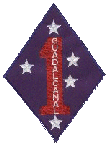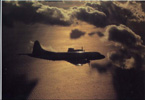ChezDaJez
Posts: 3436
Joined: 11/12/2004
From: Chehalis, WA
Status: offline

|
quote:
The Akula class - I hated them. How were they rated as far as you know?
I don't remember how they were rated in the game but they should have been rated similar to the early Los Angeles class boats. The Akula is a very capable submarine, especially the Akula II. They are pretty quiet and can generally go deeper than our own as they are more robustly built. They are also pretty maneuverable. They also have the same powertrain as the Sierra and the Oscar though the Oscar has two powertrains. The powertrains are of the same design though.
I think the Akula is one of the best SSNs the Russians have built. Unfortunately, I have been out of the field long enough that newer classes have come along that I don't know anything about. Same with our boats. I know very little about the SSN-21 Seawolf powertrains.
I have never had the pleasure of flying against a Sierra but I do have quite a few hours in contact on the Akula and the Oscar classes. For a large sub, the Oscar is amazingly quiet, somewhere in between a SSBN and a SSN for noise levels.
I also had the opportunity to fly one flight on a Typhoon but she was surface most of the time. Can't believe just how big that boat is! It looks as though you could land on her deck!
BTW, Russian submarines are typed by their powertrains, not their mission. We did this because there were times when SOSUS are some other passive sensor would pick up the signs of a particular powertrain but couldn't resolve it any further. The type designations we used are as follows:
Type 1 Nuc: Hotel, Echo, November
Type 2 Nuc: Charlie, Victor
Type 3 Nuc: Yankee, Delta
Type 4 Nuc: Papa
Type 5 Nuc: Alfa
Type 6 Nuc: Sierra, Oscar, Akula
Type 7 Nuc: Typhoon
Type 8 Nuc: Mike
We did the same with their diesels:
Type 1 Dsl: Foxtrot I, Whiskey, Romeo, Zulu, Golf I, II
Type 2 Dsl: Juliett, Bravo
Type 3 Dsl: Foxtrot III, Tango, Golf III, V
Type 4 Dsl: Kilo
BTW, I have had the opportunity to fly with, or debrief crews from Britain, Germany, Japan, Australia and Canada and I must say I've been impressed with them all. Every one of these countries have very good airborne ASW forces. I've always believed that if a non-nuclear war had come between the Soviets and the Allies, we would have destroyed 90% of the Soviet subs at sea within the first 24 hours. Those that survived wouldn't live much longer.
I got to fly in a Nimrod with 206 Sqdn from Kinloss during a NATO exercise out of Gibraltar. I was very impressed with the Marconi sonar gear. Very comparable to our AQA-7 series and in some ways better. It was a bit disconcerting though to be down at 100 feet, at night, in a 45 degree angle of bank in an airplane that has a wingspan much greater than 100 feet!
I also flew with a German crew in an Atlantique during the same exercise. I had never considered the Atlantique to be a very capable ASW bird prior to my flight but the crew made me eat my thoughts. The were outstanding at shallow water ASW! They are also crazy flyers!!!
The Japanese are also outstanding. They are probably the premier shallow water experts. They seem to be able to sniff out diesel subs that no one else can
I never got to fly with the Aussies or the Canadians. I have debriefed many of their crews though and they are also very good though I think the Canadians made a mistake when they purchased the OL-82 sonar suite for their Auroras. Thats the same system that the S-3A used and the S-3A couldn't find a submarine in a bathtub. Thats probably more a function of the carrier admirals using them for everything but ASW. Still, the system itself has some major deficiencies.
Unfortunately, I think we also took a major step backward with the P-3C Update III sonar suite, the UYS-1. The AQA-7V 10/11 gear installed in previous versions was an outstanding piece of gear. Easy to maintain, simple to operate and a good operator could make it sing. Plus the paper grams provided a contact history that was hard to beat.
The UYS-1 basic system was very good but they paired it with a low-res, logarythmic display that basically washed out all the frequency characterisitics that a good operator needs to identify a frequency source. So it eventually became a frequency numbers matching game... pretty useless when you are in an area where ships are producing frequencies similar to the ones you're looking for.
Anyways, now that I've given away all of our secrets, I better go hide. Think I'll answer the knock at the door first...
Chez
_____________________________
Ret Navy AWCS (1972-1998)
VP-5, Jacksonville, Fl 1973-78
ASW Ops Center, Rota, Spain 1978-81
VP-40, Mt View, Ca 1981-87
Patrol Wing 10, Mt View, CA 1987-90
ASW Ops Center, Adak, Ak 1990-92
NRD Seattle 1992-96
VP-46, Whidbey Isl, Wa 1996-98
|
 Printable Version
Printable Version



















 New Messages
New Messages No New Messages
No New Messages Hot Topic w/ New Messages
Hot Topic w/ New Messages Hot Topic w/o New Messages
Hot Topic w/o New Messages Locked w/ New Messages
Locked w/ New Messages Locked w/o New Messages
Locked w/o New Messages Post New Thread
Post New Thread